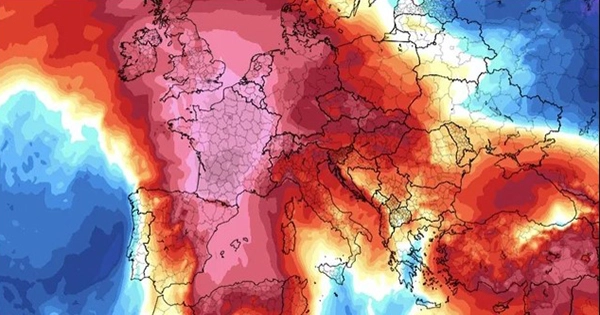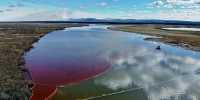When heat is trapped over an area by a long-lasting area of high pressure, a heat dome forms. The people, crops, and animals below may suffer due to stagnant, hot air that can seem like an oven as the heat dome might cover multiple states and last for days to weeks. The behavior of the jet stream, a band of swift winds high in the sky that typically flows from west to east, is sometimes linked to the activity of heat domes. The jet stream often meanders north, then south, then back north in a form like a wave. These larger jet stream meanders travel more slowly and have the potential to become stagnant. Heat domes may then appear.
Air builds up and sinks when the jet stream swings far to the north. As it descends, the air warms and also helps to keep the skies clean by reducing humidity. This enables the sun to produce ever-hotter temperatures close to the earth. The air near the ground may warm further as it travels across mountains and sinks. This downslope warming was a major factor in the extremely hot temperatures in the Pacific Northwest during a heat dome event in 2021, when temperatures in British Columbia, Canada, reached 121 degrees Fahrenheit, breaking the previous Canadian record by 8 degrees F, and Washington set a state record with 120 degrees Fahrenheit (49 Celsius) (4 C).
Human influence, Heat domes can remain longer, although they typically only last a few days in one place. They can also travel, affecting nearby places over the course of a week or two. The heat dome that contributed to the U.S. heat wave in June 2022 gradually moved eastward.
The heat dome occasionally becomes more enduring. Up to 10,000 people perished amid several weeks of extreme summer heat in the southern Plains in 1980. During the 1930s Dust Bowl years, it also occurred throughout a large portion of the United States. Because the meteorological pattern that permits a heat dome to exist typically produces weak breezes and an increase in humidity, a heat dome can have devastating effects on people. Because neither of these variables causes as much perspiration, the heat feels harsher and becomes more harmful.
This threat is frequently communicated by using the heat index, which combines heat and humidity and shows what the temperature will feel like to most people. The quantity of cooling at night is further decreased by the high humidity. Warm evenings may prevent those without air conditioners from cooling off, increasing the risk of heat-related illnesses and fatalities. Temperatures have already increased due to global warming. In the summer of 1995, the Chicago region had five days of estimated 739 fatalities, which is one of the deadliest recent examples of the effects of a heat dome with high temperatures and humidity in the U.S.















